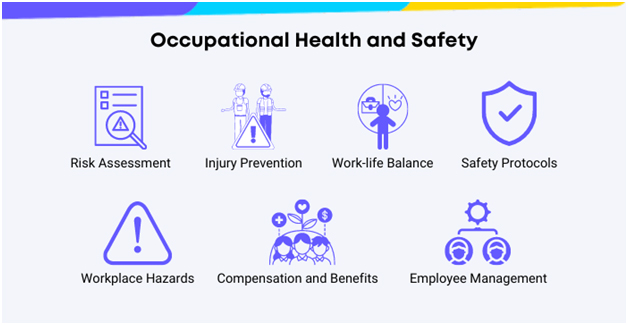Introduction:
In today’s dynamic and fast-paced work environments, ensuring the safety and well-being of employees is of paramount importance. A strong commitment to workplace safety and compliance with Occupational Health and Safety (OHS) regulations are essential for fostering a secure and productive working environment. In this article, we will explore the integration of workplace safety and OHS practices, highlighting their significance in various industries and presenting strategies for creating a safe and healthy workplace for employees.
- Understanding the Link between Workplace Safety and Occupational Health:
Workplace safety and occupational health are inherently interconnected aspects of employee well-being. While workplace safety primarily focuses on preventing accidents and injuries, OHS takes a broader approach, encompassing physical, mental, and emotional health concerns. Recognizing this symbiotic relationship allows organizations to develop a more holistic approach to employee safety and well-being.
- The Impact of Workplace Safety and OHS Compliance:
Compliance with OHS regulations goes beyond just adhering to legal requirements; it directly influences the overall success of a business. Reduced absenteeism, increased employee morale, higher productivity, and a positive organizational culture are some of the tangible benefits that result from prioritizing workplace safety and OHS compliance.
Effective workplace safety and OHS programs begin with a thorough identification and assessment of potential hazards. Conducting regular workplace risk assessments helps organizations identify workplace hazards, ergonomic concerns, exposure to hazardous substances, and psychosocial factors affecting employees’ health.
Implementing Preventive Measures:
Once hazards are identified, organizations must take proactive measures to prevent accidents and health risks. This may include implementing engineering controls, providing personal protective equipment (PPE), ergonomic adjustments, and designing safety protocols tailored to specific job roles and tasks.
- Training and Employee Engagement:
Empowering employees with the knowledge and skills to identify and address safety and health risks is essential. Regular training sessions on safety protocols, emergency response procedures, and OHS guidelines foster a safety-conscious culture where employees actively participate in maintaining a safe working environment.
- OHS Compliance in Diverse Industries:
Different industries present unique safety challenges, and compliance with OHS regulations must be tailored accordingly. For example, the manufacturing industry may focus on machine guarding and chemical safety, while the IT sector may emphasize ergonomic workstations and mental health support.
- Safety Leadership and Communication:
Leadership plays a pivotal role in promoting workplace safety and OHS compliance. By demonstrating a strong commitment to safety, leaders set an example for employees and encourage open communication about safety concerns.
- Monitoring and Continuous Improvement:
Ongoing monitoring and evaluation of workplace safety and OHS practices are crucial to maintaining compliance and effectiveness. Regular inspections, incident reporting, and data analysis help identify areas for improvement and implement corrective actions.
Conclusion:
Integrating workplace safety and Occupational Health and Safety (OHS) practices is a proactive approach that demonstrates a company’s commitment to the well-being of its employees. By prioritizing employee safety and complying with OHS regulations, organizations create an environment where employees can thrive both physically and mentally. Through ongoing assessment, employee engagement, and continuous improvement, businesses can achieve a safer workplace, higher productivity, and a positive organizational culture that fosters success and longevity. Embracing a comprehensive approach to workplace safety and OHS not only protects employees but also becomes a driving force behind an organization’s prosperity in today’s competitive landscape.
This exclusive article has been written by Arsalan Ahmed and published in Automark Magazine’s printed edition of August-2023
